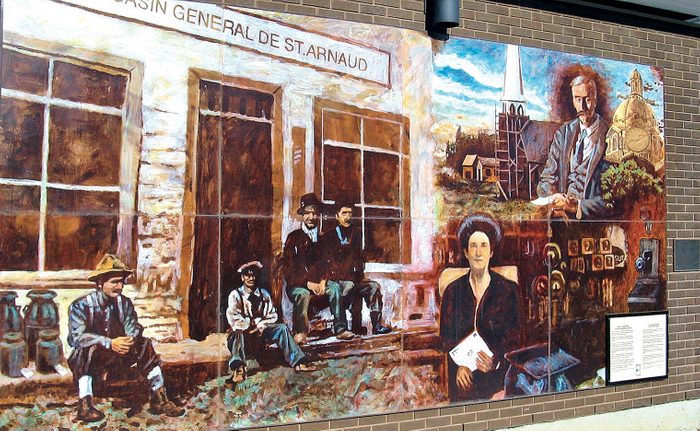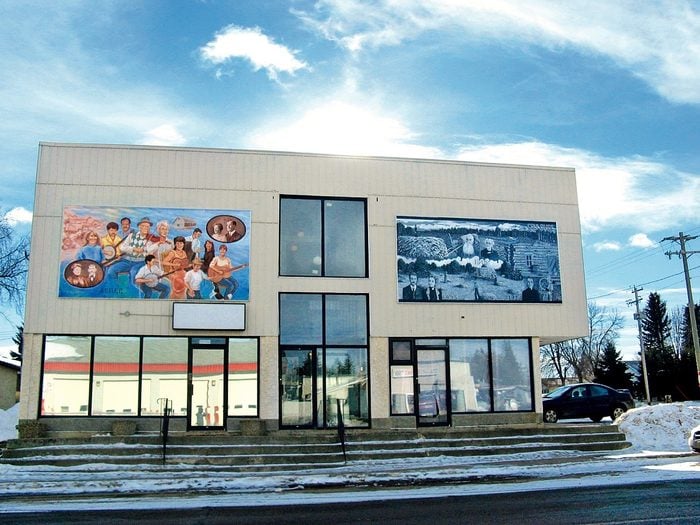
Painting History in Legal, Alberta
The town of Legal, Alberta, was my hometown for many years. Home to 1,200 people, it sits 50 kilometres north of Edmonton, just off of Highway 2. Most drivers don’t even notice its road sign. With its pleasant main street, post office, family restaurants and neat gardens, the hamlet seems ordinary enough. But something draws visitors here from around the country—enormous murals.
Murals are everywhere: on office buildings, the grocery store, restaurants, even near the church. Often, murals cover different walls of the same building. To see them all, visitors need to walk the main street twice and then turn into the side streets to discover more. Newcomers soon realize that the murals are not just decoration; they reveal the history of the town and area.
The mural project was born in 1997 in collaboration with L’Association Canadienne-Française de l’Alberta Régionale Centralta. Twelve artists, most of whom live in the Legal area, were invited to depict the history of French immigrants in the region. Now there are 33 murals in town, and Legal is recognized as the French mural capital of Canada and the mural capital of the world per capita.
The first wall paintings greet visitors just a few minutes from the town’s welcome sign. A two-storey building housing a restaurant and offices has four of them. Painted in an almost monochromatic palette, they portray the oldest families who settled here more than 100 years ago. The sturdy, hardworking men, heads of their big families, look out with silent dignity and wisdom. Their modestly dressed wives—who today might be considered young to be wed—have tired eyes and wrinkled faces. Their serious, unsmiling children seem already aware of the hard life ahead of them. These murals also reflect the calm strength that helped settlers survive in an unknown land.
Discover more hidden gems across Canada.

Walking Through History
But life was not all hardship. Other murals depict some of the joys, including one showing a merry group playing musical instruments. Reading aloud, playing music, dancing—that’s what people did in the age before TV and the Internet. It created an intimacy that’s rare in the modern era.
The wall of a grocery store offers the history of the Legal Co-op. The building’s design, produce and name have changed, but the store is still there, uniting the small community. The next mural unveils another piece of history: In the wintry night forest, men with loaded horses follow a barely visible trail. The helpful description tells us that after oil was discovered in the north, men from Legal went there to work. Nowadays, it is hard to imagine these men walking across the frozen land, knowing that their lives depended solely on their stamina and that of their horses. Their wives were left behind to mind the house, feed and clothe the children and worry about their husbands’ well-being.
As we continue to walk through history, the murals show changes in clothing, cars and farming equipment. People in the paintings become more relaxed and modern looking. Some murals dedicated to children are painted in a pop-culture style with bright colours.
As visitors leave town, they might wave to the locals, whose grandparents’ faces they have seen on the walls. The thread of history in Legal is not broken and its citizens have done immense work to save it for future generations.
Wondering how Legal, Alberta, got its name? Find out the fascinating story behind 50 funny town names in Canada.